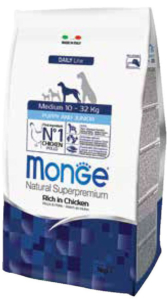Lagotto Romagnolo female sterilization
A few years ago spaying the female dog was always recommended by veterinarians. It could be debated whether to do it before or after, but on whether to do it the collected opinions were always in favor of sterilization.
In our article a few years ago we had already given our views on sterilization. We had tried to provide useful information for an informed decision.
One of the main topics was on when to spay one’s dog. Our concern was mainly due to early sterilization being proposed to some of our puppy owners.
The topic is still current, in fact many of our Lagotto owners ask us for our views. I invite them to read that article.
Instead, today we wanted to write about some different indications we are getting from veterinarians.
There seems to be a real diatribe between the old school of thought and the more modern school of thought on the necessity of spaying.
In addition, it is important to choose how to spay our dog.
Should I sterilize my dog?
A few years ago, as precisely stated in the introduction, the answer was trivially YES!
Today the guidance we get from the veterinary hospital at which we serve has changed somewhat. In fact, there is no particular reason not to do it. Especially if we use modern technologies that have virtually no risk and are minimally invasive.
However, the main reason for female dog owners to have spay/neuter is somewhat dropped. That is, the risk of cancer in a female who does not reproduce regularly.
Today the guideline from veterinarians fresher than recent studies is:
The risk of tumor is really high in females who have hysterical pregnancies after heat.
The risk of cancer is virtually zero in females that do not have hysterical pregnancies.
According to this new guidance, the answer to the question of whether I should spay my dog becomes open and arguable.
Sterilization with Laparoscopy
To proceed with laparoscopic sterilization, we need to go to a Veterinary Hospital. Hardly a veterinary clinic or veterinary practice will have the equipment, which is very expensive, to do this type of surgery.
By ultrasound, it is checked if the uterus is in good condition and has no tears
If so, it does not need to be removed, one can proceed with cin laparoscopic surgery to remove the ovaries. The result for the purposes of cancer risk and cessation of heat and hysterical pregnancy is the same.
Laparoscopic surgery is generally somewhat more expensive than classical surgery. The advantages in our opinion are enormous.
Two very small cuts are made for the insertion of the probe. In contrast we will have a cut with about 13 stitches all along the abdomen.
Our last females who arrived at the end of their breeding career, 5 litters maximum in life as per code of ethics, had laparoscopic surgery.
Truly a joy. The last one was Mocha. Taken by the nurse at 2 p.m. and returned at 4 p.m. She was jumping and playing. She was happy to see me.
The dog after surgery is like she did nothing.
Do you want tocompare with Elizabethan collar, days off, difficulty in movement?!






